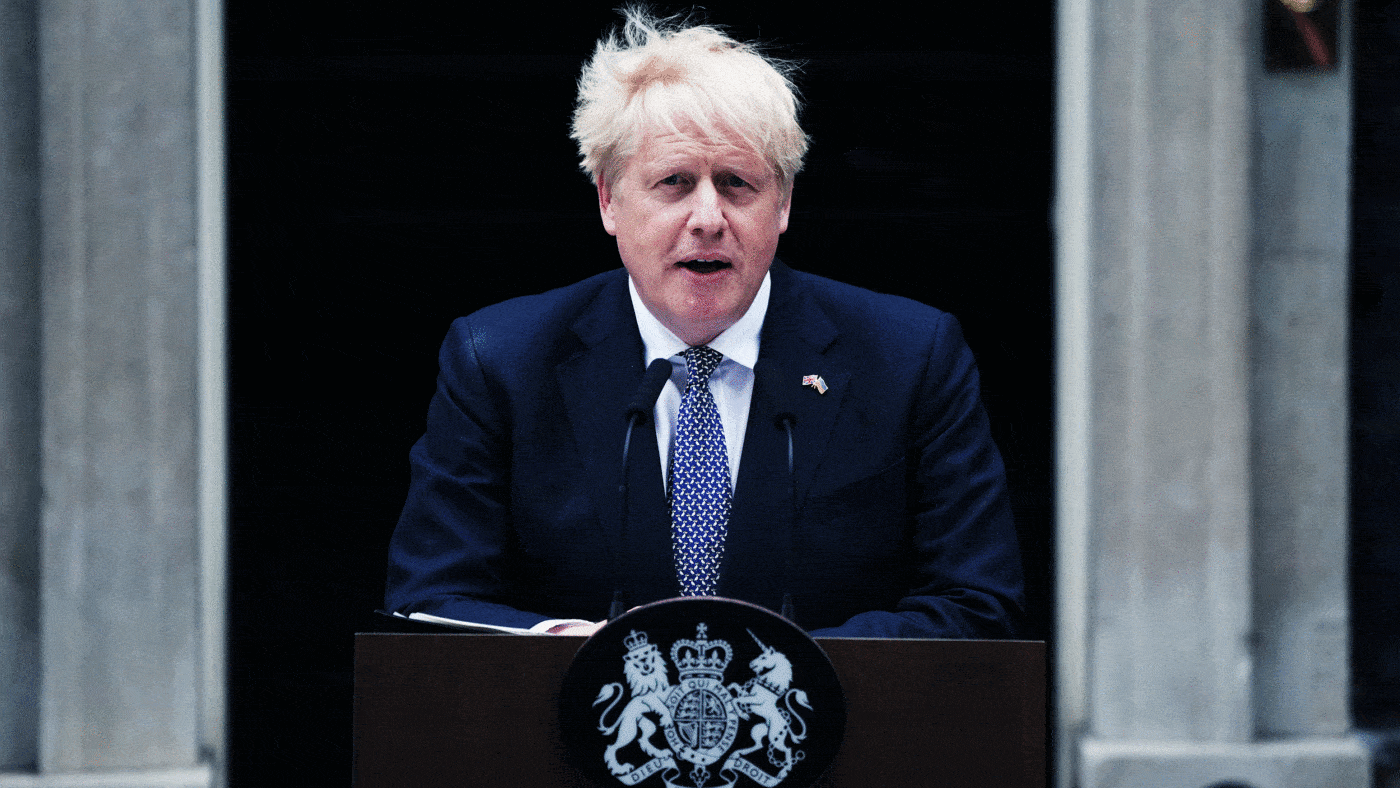Among the many talking points arising from Boris Johnson’s downfall has been how history will view his premiership. There are of course many components to this, but one thing that future students of history may wonder is how it all unravelled so quickly.
For his MPs, the Pincher affair was the final straw, but the camel was already groaning under the weight of public anger over Partygate and other lockdown breaches, something I warned about back in December, and which was evidenced by the narrowness of the confidence vote among Conservative MPs.
For the electorate, Johnson’s fall from grace wasn’t quite as sudden as it was among his MPs, though it was still very fast by the normal standards of shifts in people’s views.
Many, including Boris Johnson himself, have referenced the Conservative victory in the 2019 general election. This was indeed a high starting point, being the Conservatives’ biggest majority since 1987, but Johnson’s star rose further before it fell. Boosted by Brexit in January 2020 and the rally-round-the-flag as the pandemic arrived shortly after, the party surged to the biggest poll lead for a Tory government since 1982, and its highest vote share ever.
A year ago, the Conservatives were still leading by roughly their 2019 winning margin. They gained Hartlepool in a by-election as a governing party – a once in a generation feat in itself – on a swing that shattered postwar records. And at the Batley and Spen by-election, they came within 323 votes of a double by-election gain that hadn’t been achieved since Victorian times.
What went wrong was, on the face of it, remarkably simple. Although headline voting intention doesn’t always tell the full story, not least because there is always more going on beneath the surface, the swings from Conservative to Labour happened in three distinct phases.
Firstly in May 2020, when Dominic Cummings kept his job after details of his trip to Barnard Castle emerged. Secondly in November 2021 when Commons rules were changed for Owen Paterson to avoid suspension. And thirdly in December 2021 when ‘partygate’ first broke.
The common thread across these incidents was the theme of ‘one rule for them, another for everyone else’. This may well have been reinforced by the drip-drip of similar stories, that may not have been significant in isolation, but still had a cumulative effect.
It became popular among Boris Johnson’s supporters to suggest that the public weren’t bothered by doubts about his integrity, or that it was a Westminster bubble obsession that would not bother people elsewhere. And not just among his supporters – even some of his opponents started believing it too.
Leaving the principle to one side, there was one very big flaw in this ‘the Red Wall won’t care’ logic – it wasn’t true. The behaviour of the Prime Minister and others did register in focus groups and polls and people clearly weren’t happy about rule breaking, particularly with respect to Covid rules.
For a long time, other drivers of voting intention, such as goodwill from the election honeymoon, formally leaving the EU, the rally-round-the-flag, furlough, the vaccine rollout, and so on, helped maintain Johnson and the Conservatives’ standing, and their polling lead was also propped up by remaining doubts about Labour – its own brand not yet fully detoxified.
These other factors were at least enough to offset the increasing drag from Boris Johnson’s misbehaviour – until they weren’t.
Arguably Johnson’s biggest selling point to fellow Tories had been that he was an electoral asset, but this is not straightforward. It was undoubtedly true when he outperformed his party in London’s mayoral elections, and although the 2019 general election wasn’t simply about its victor, he did have a disproportionate appeal to the types of voter that deserted Labour.
But by the end it had been clear for some time that Johnson’s brand was weaker than his party’s, and that the former was beginning to contaminate the latter. This was clear from the data long before the Prime Minister was booed at the Queen’s jubilee service, or the Conservatives suffered a double by-election defeat on substantial swings.
In Wakefield, polling by J.L. Partners (for which my firm, Number Cruncher, conducted the fieldwork) found that the two biggest reasons for swing voters choosing Labour were the perceptions that Boris Johnson was dishonest and that he was out of touch with working class people.
Ultimately though, Boris Johnson’s downfall was not about one type of voter or constituency versus another. It was that his conduct went down badly across-the-board, and that, eventually, caught up with him.
Click here to subscribe to our daily briefing – the best pieces from CapX and across the web.
CapX depends on the generosity of its readers. If you value what we do, please consider making a donation.


